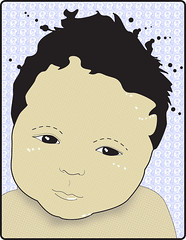 Today I want to introduce a new contributor to Anxietyguru.net. Den is an Anxiety Guru reader and has lived with anxiety disorder for several years and has decided to offer his personal experiences and knowledge to help others with their daily struggle with anxiety.
Today I want to introduce a new contributor to Anxietyguru.net. Den is an Anxiety Guru reader and has lived with anxiety disorder for several years and has decided to offer his personal experiences and knowledge to help others with their daily struggle with anxiety.
According to some recent studies scientist have shown human babies may be born with an ability to discern musical rhythms, possess a rudimentary understanding of math and language, and are equipped with some knowledge of the physical world. While these studies may be controversial, there is little doubt that babies are born with limited cognitive and phyiscal capabilities. That doesn’t mean however, that for adults there isn’t anything most of us could learn from these cute little bundles of joy. And one such thing is learning to breathe calmly and peacefully.
If you’re tempted to skip this article because you fancy yourself a professional breather (after all you’ve been doing it your entire life), then you might miss out on two important facts – 1. Throughout our lives as we age our breathing patterns change and not for the better, and 2. We can relearn to breathe in a way that will not only improve our overall mental and phyiscal health, but also instill a sense of calm and serenity any time any place. This is important – practicing proper breathing can help you calm your frazzled, tense, and stressed nerves to restore balance and peace.
Newborns have a limited range of capabilities, that much we know. In fact, without the care of others a baby would not survive on their own. However, babies are able to perform many things and do them perfectly. Suckling is a skill most babies are born with to take in liquid nourishment. Digestion, and to the chagrin of many parents, excreting waste are bodily functions babies also do very well. They may not be able to touch their toes at first, but babies are born expert breathers. And if you’ve ever closely watched a baby breathe while it’s sleeping you’ll see proper breathing put into practice.
It’s quite simple really, but apparently a little bit more of a challenge for women than men. I won’t even offer you a guess as to why – I haven’t a clue. With some practice though, everyone can do it. The easiest way I’ve found to start is to lie down on your back.
Get comfortable on your back and place one hand on your chest and the other on your stomach. As you breathe in, draw your breath into your gut so that your stomach rises with the inhale and not your chest. Your chest should stay the same. As you breathe out your stomach will fall back to the starting point. The placement of your hands will guide you. Fill your stomach with air, not your chest. Breathe in slowly through your nose, and then out through your mouth. This is called diaphragmatic breathing. This is how babies do it.
Practice this type of breathing often and over time you will be doing it naturally like we all used to do as babies. I have been practicing diaphragmatic breathing for several months a few breaths every day, at stop lights while driving, at night in bed, and when I wake in the morning. It hasn’t yet become a complete habit, but I have noted a general improvement. Chest breathing, which is how most adults breathe most of the time, is very shallow and I notice now that I breathe much more fully and deeply in general.
Aside from the overall benefits, this type of breathing will help when you are feeling anxious or in the midst of a panic attack. Take notice of your breathing during either of those times and you’ll realize you are breathing shallow into your chest. Take a few long slow deep breaths in through your nose down into your diaphragm and exhale slowly out through your mouth. This alone may not fend off your anxious thoughts, but it will benefit you and help you calm down, because this deep and slow mindful breathing is the opposite of hyperventilation. It is the breath of serenity and stillness. It is the calm gentle breath of peacefully sleeping babies.
For more information on diaphragmatic breathing click here.
Hope this helps.
Den
Anxiety Guru contributor.





Leave a Reply